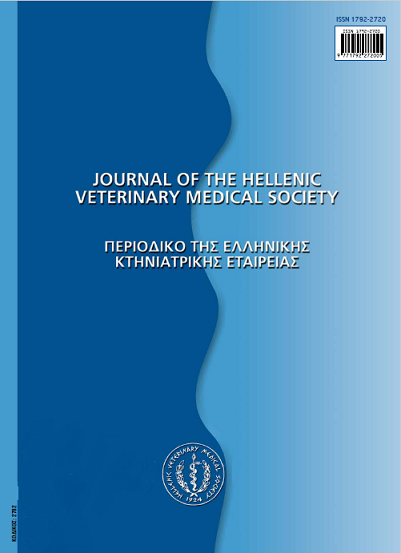Epidemiological investigation of avian influenza in regions of Northern Greece

Abstract
The results of an avian influenza viruses surveillance program in chicken and turkey industrial flocks, as well as in some wild birds from regions of N. Greece during 1999-2000 are presented in this paper. For this purpose, avian influenza virus isolation was attempted by inoculation of samples from chickens and wild birds into embryonated chicken eggs. The samples originated from 35-60 week-old layers and breeders with mild respiratory signs and drop in egg production. 34 wild birds (sparrows, chaffinchs, gulls), that were brought dead to the laboratory of Veterinary Research Institute of Thessaloniki, were also examined in order to investigate the cause of their death. At the same time, 720 serum samples from 30 chicken and 6 turkey flocks were examined by Agar Gel Immunodiffusion (AGID) test. During the same period and in the framework of a surveillance program for avian influenza viruses in Greece, 2580 paired serum samples from chicks were tested by AGID test. Chicks were imported from Italy, where a Highly Pathogenic Avian Influenza was in progress during 1999-2000. All virus isolation attempts and serological tests were negative.
Article Details
- How to Cite
-
PAPANIKOLAOU (I. ΠΑΠΑΝΙΚΟΛΑΟΥ) J., & KOUMBATI-ARTOPIOU (Μ. ΚΟΥΜΠΑΤΗ-ΑΡΤΟΠΟΙΟΥ) M. (2018). Epidemiological investigation of avian influenza in regions of Northern Greece. Journal of the Hellenic Veterinary Medical Society, 53(2), 132–137. https://doi.org/10.12681/jhvms.15369
- Issue
- Vol. 53 No. 2 (2002)
- Section
- Research Articles

This work is licensed under a Creative Commons Attribution-NonCommercial 4.0 International License.
Authors who publish with this journal agree to the following terms:
· Authors retain copyright and grant the journal right of first publication with the work simultaneously licensed under a Creative Commons Attribution Non-Commercial License that allows others to share the work with an acknowledgement of the work's authorship and initial publication in this journal.
· Authors are able to enter into separate, additional contractual arrangements for the non-exclusive distribution of the journal's published version of the work (e.g. post it to an institutional repository or publish it in a book), with an acknowledgement of its initial publication in this journal.
· Authors are permitted and encouraged to post their work online (preferably in institutional repositories or on their website) prior to and during the submission process, as it can lead to productive exchanges, as well as earlier and greater citation of published work.


